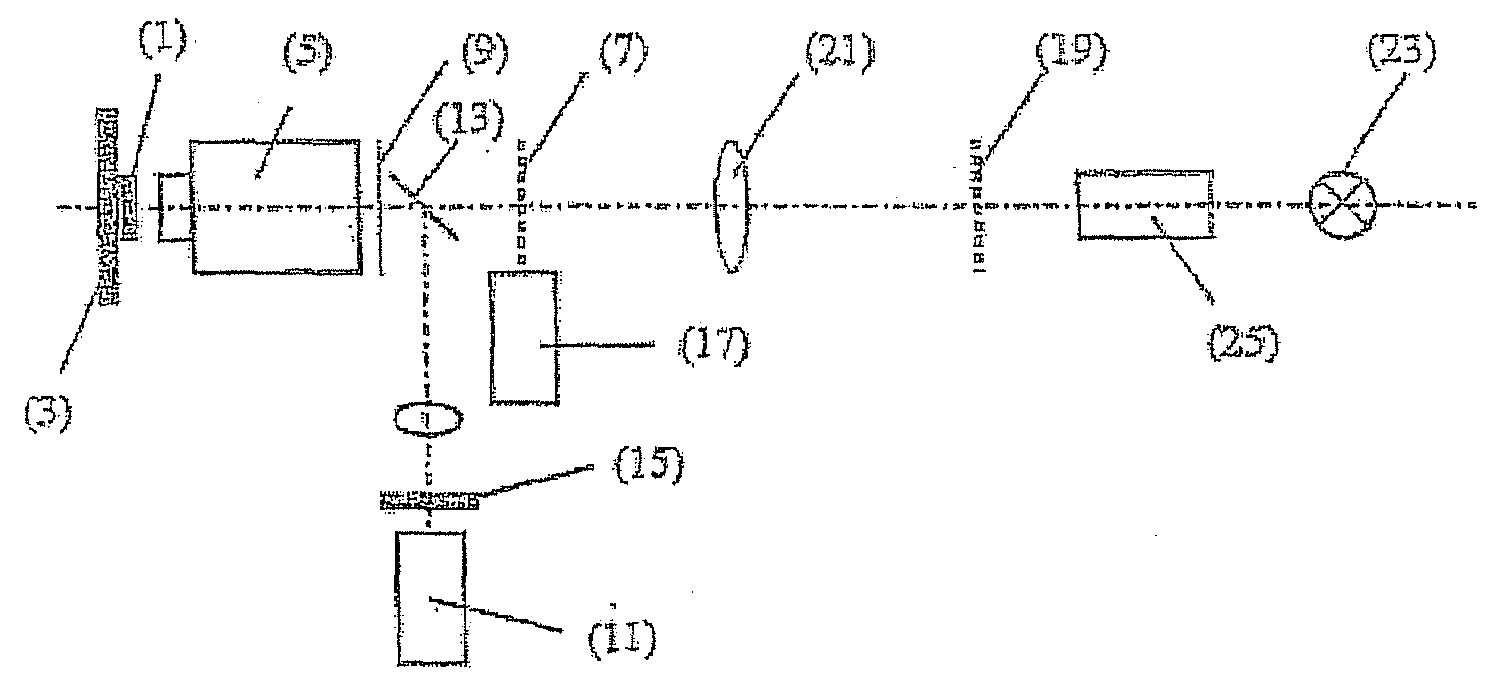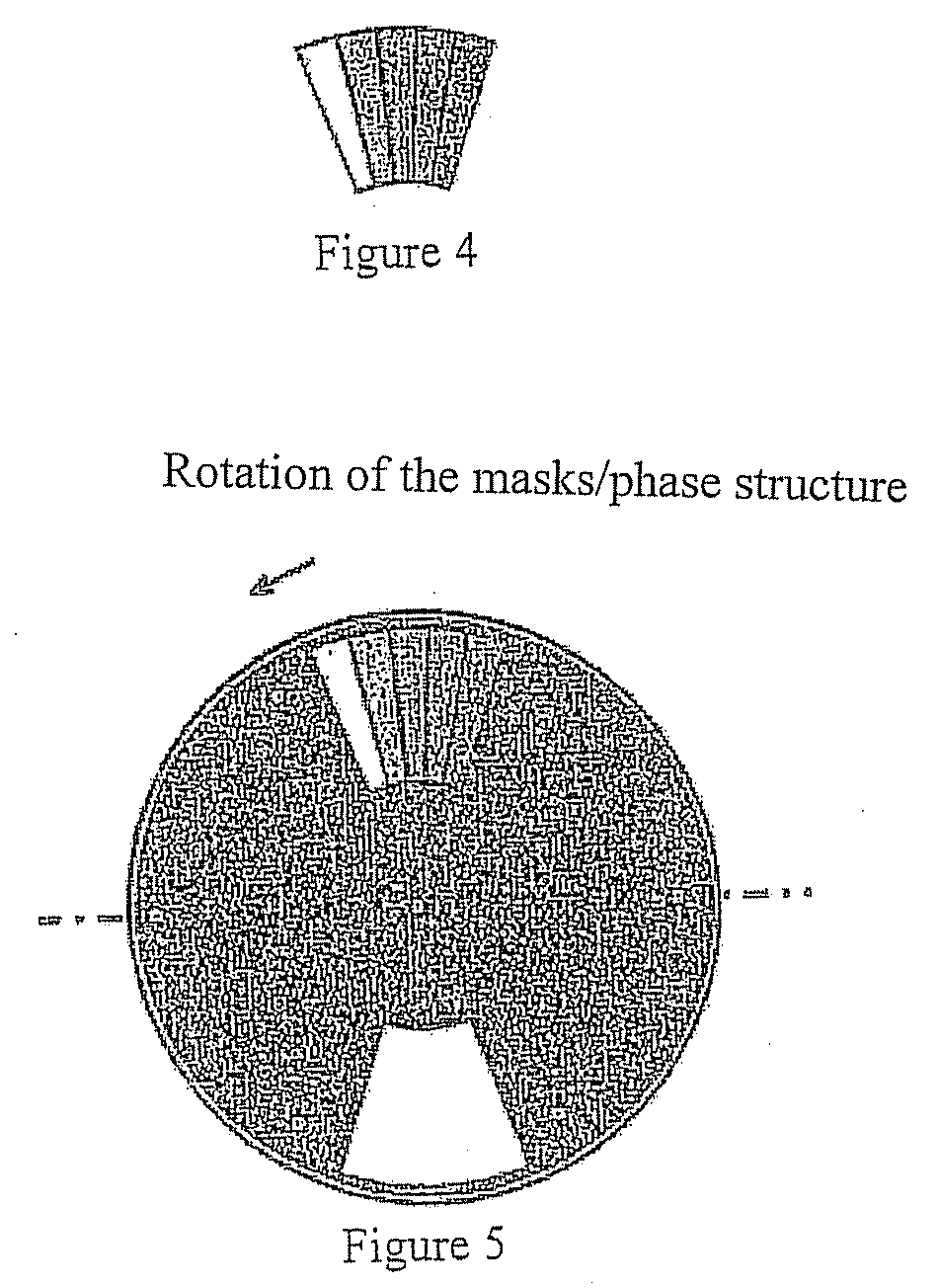Method and Configuration for the Optical Detection of an Illuminated Specimen
- Summary
- Abstract
- Description
- Claims
- Application Information
AI Technical Summary
Benefits of technology
Problems solved by technology
Method used
Image
Examples
Embodiment Construction
[0034]The invention will now be explained in detail based on practical examples.
[0035]FIG. 1 shows a structure (phase structure, honeycomb structure) that is disposed in an intermediate image plane conjugate to the specimen, in this case, with an N=6-fold symmetry. The circular ring marks the illumination.
[0036]The structure shown in FIG. 1 generates a diffraction pattern in the pupil, again with a 6-fold symmetry of the diffraction orders, with oppositely lying pairs of the illumination corresponding to the orientation of one structure in one spatial direction.
[0037]A typical illumination distribution in the pupil of the objective lens or in a plane conjugate to said pupil is shown in FIG. 2. The light distribution generated by the structure shown in FIG. 1 in the pupil is illustrated. The points P drawn in are the sites of the diffraction orders, and the ring R shows the boundary of the pupil. The 0th diffraction order is preferably located on the optical axis OA. Given an N=6-fol...
PUM
 Login to View More
Login to View More Abstract
Description
Claims
Application Information
 Login to View More
Login to View More - R&D
- Intellectual Property
- Life Sciences
- Materials
- Tech Scout
- Unparalleled Data Quality
- Higher Quality Content
- 60% Fewer Hallucinations
Browse by: Latest US Patents, China's latest patents, Technical Efficacy Thesaurus, Application Domain, Technology Topic, Popular Technical Reports.
© 2025 PatSnap. All rights reserved.Legal|Privacy policy|Modern Slavery Act Transparency Statement|Sitemap|About US| Contact US: help@patsnap.com



